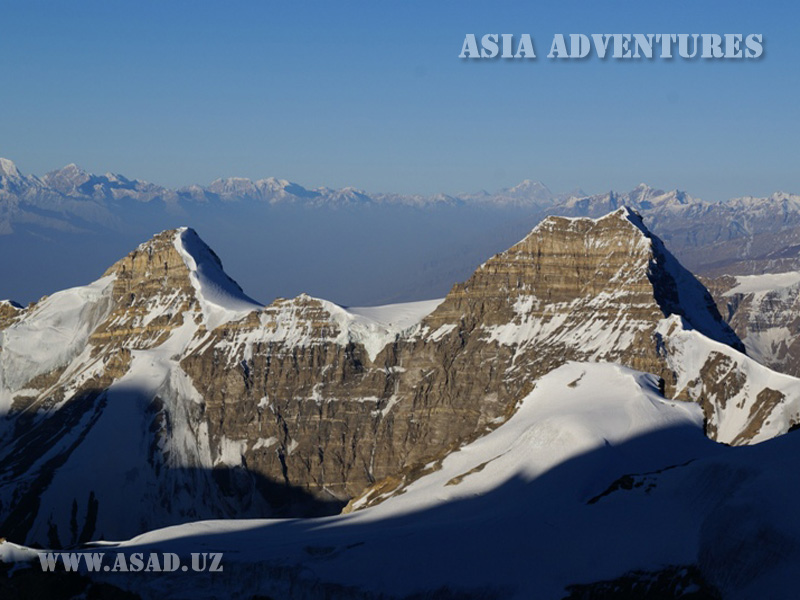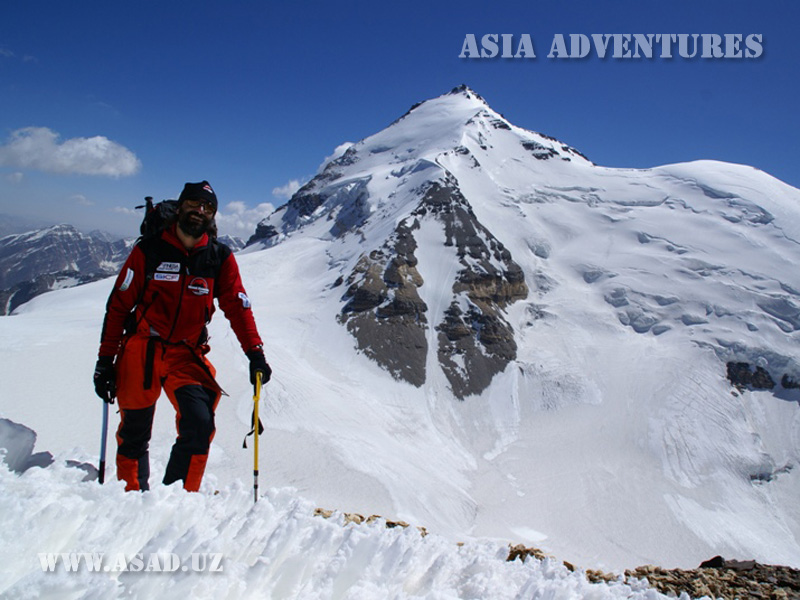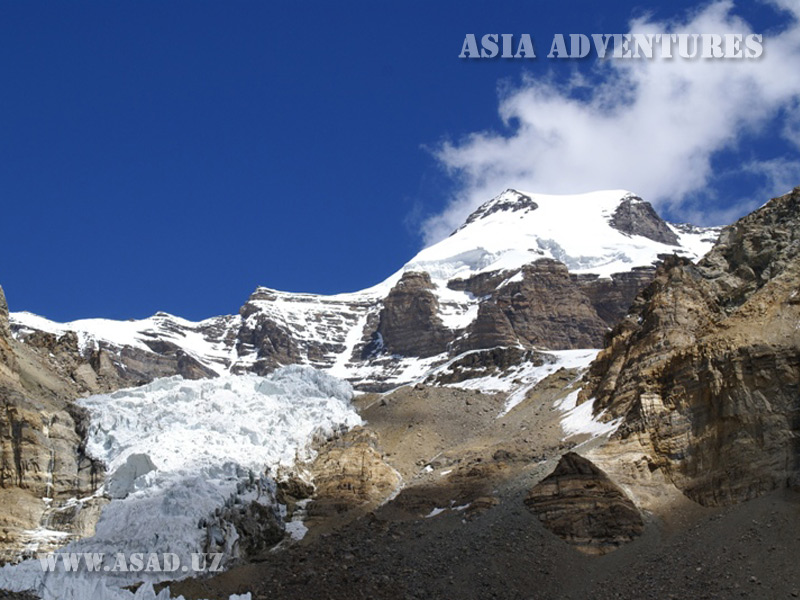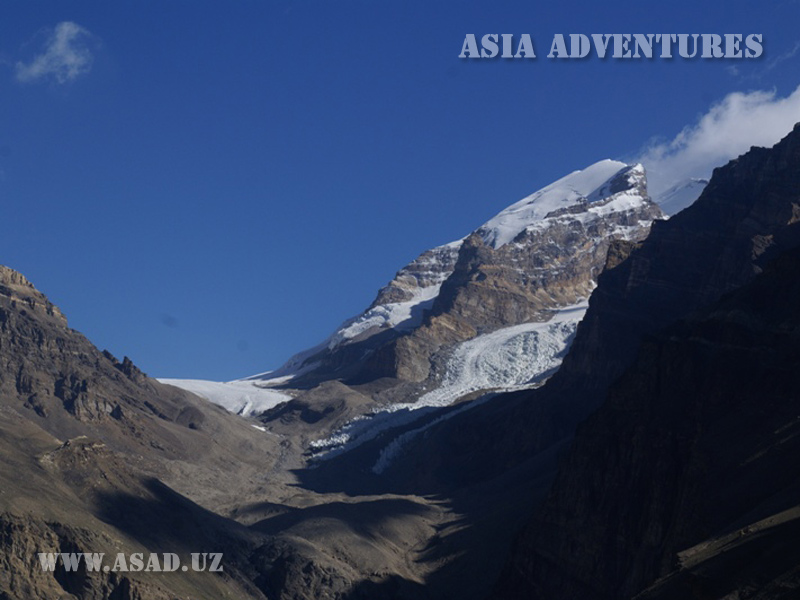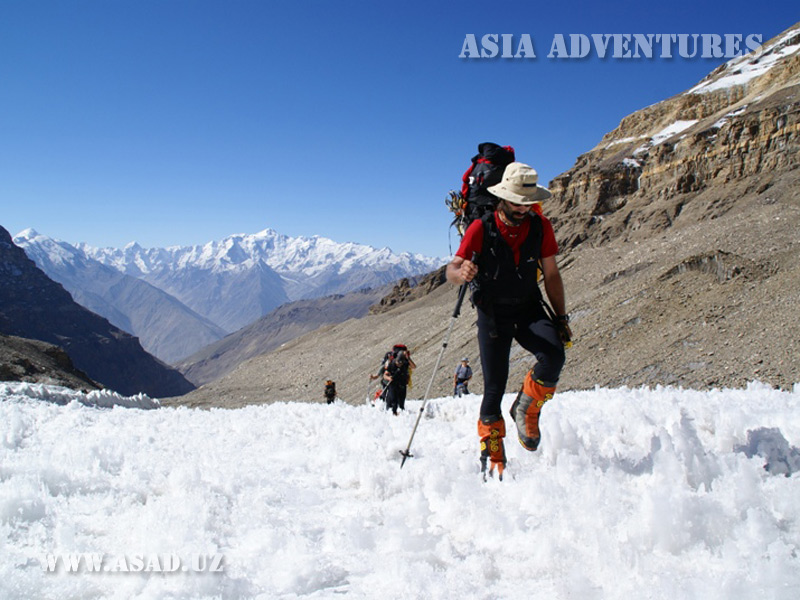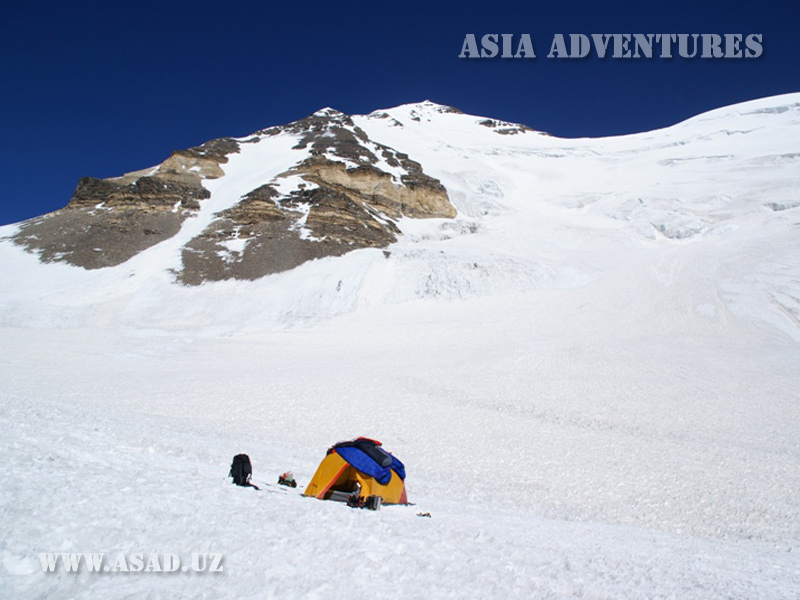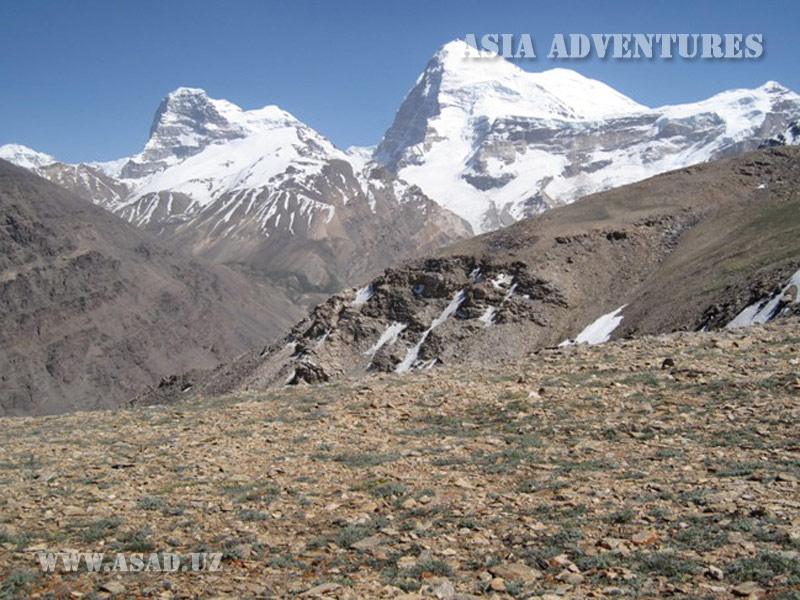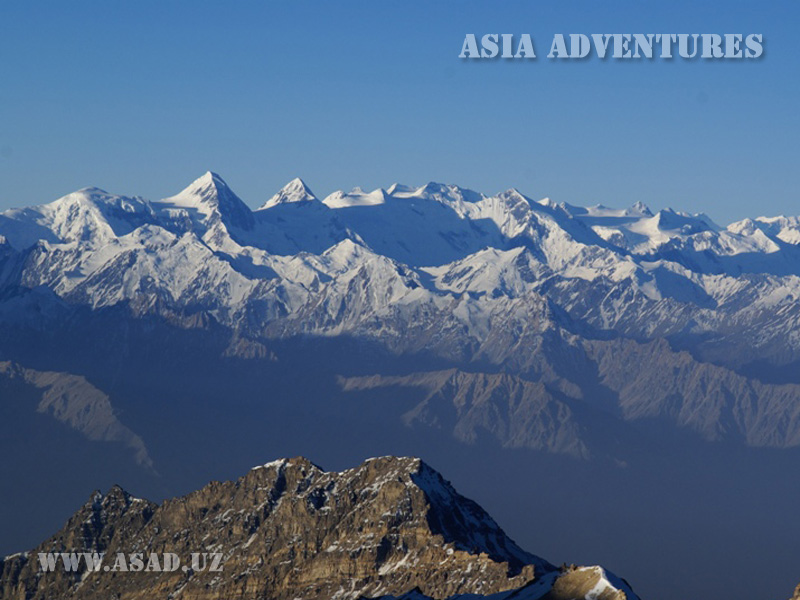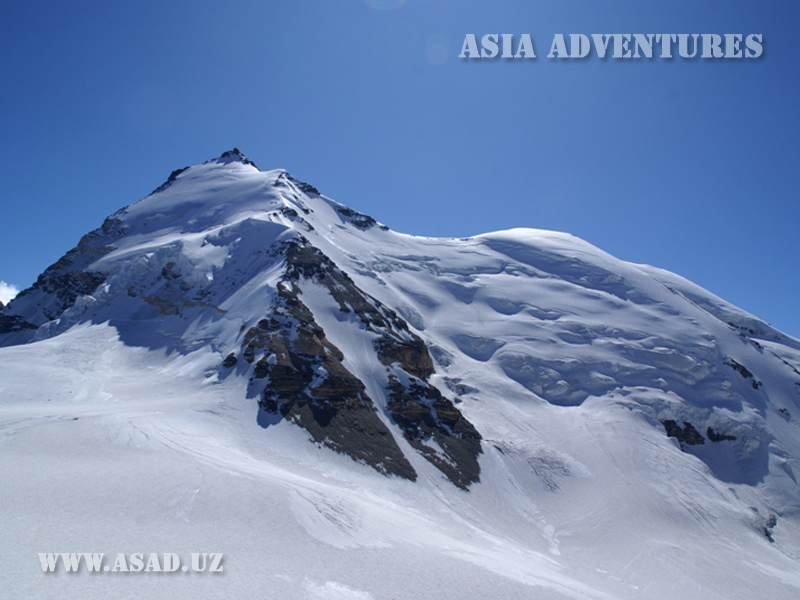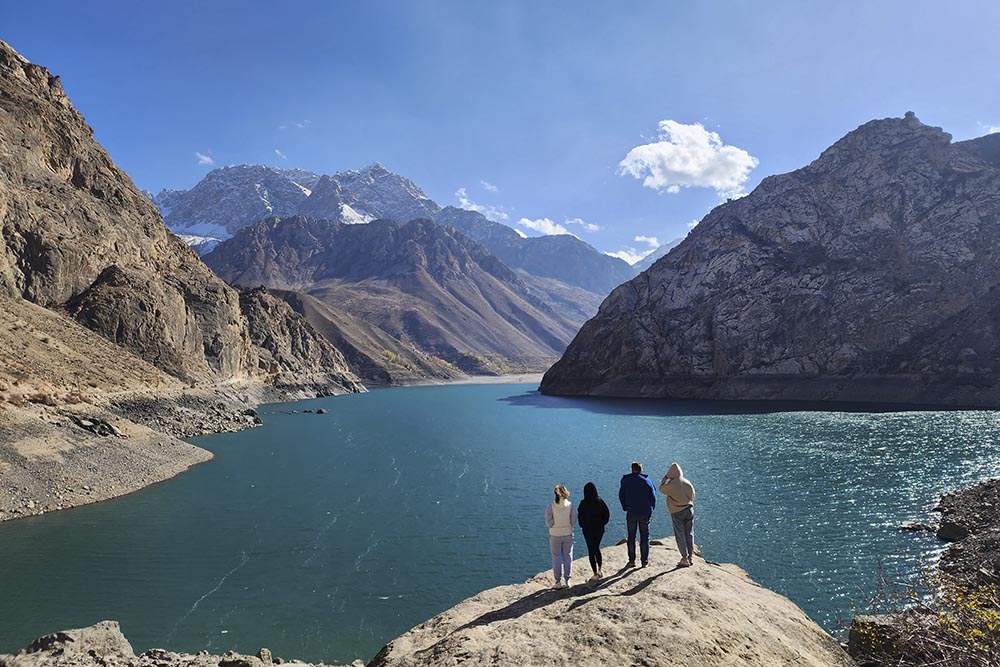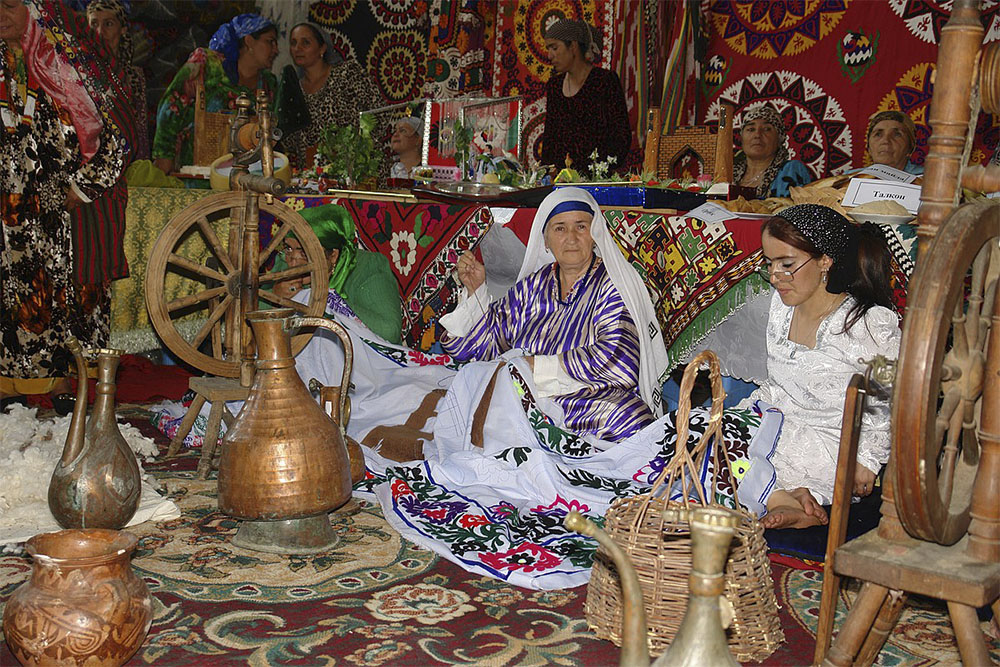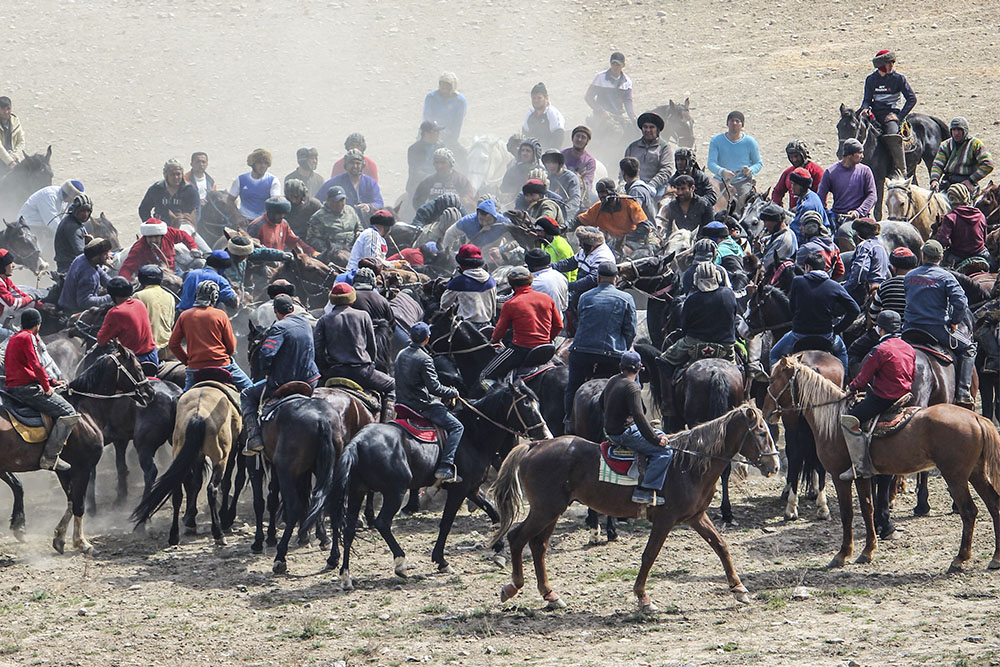Karl Marks Peak (first is called Tsar Peacemaker Peak) is the highest point of Shakhdaryinskiy Range in south-west Pamir, Tajikistan.
The first climbing expedition to Karl Marks Peak was in 1946 under the direction of Beletskiy E. The scouting of Rushanskiy Range was hold in the region of Patkhor Peak.
Successfully finished the first part of the expedition, in the second part of August the expedition caravan crossed via Shugnanskiy Range via Duzakh-dara Pass, and came to K.Marks Peak along the valley of Redjig River. Two scouting groups went to the peak foot along the valleys of Shabay and Khatsak Rivers, after it the way of ascension from the glacier of Khatsak was chosen, via Nishgar Pass on Marks Plateau and further along West Ridge. Firstly 7 people are ascended on Karl Marks Summit on 06.09.1946 at 13:30 in the difficult weather conditions. It was Beletskiy E, Abalakov E, Bagrov A, Ivanov E, Semenov P, Sidorenko A and Ugarov A. After ascension Beletskiy E has ascended on the pass in the east part of Shakhdaryinskiy Range, more east of Engels Peak (Pogranichnikov Pass). The expedition was finished in the beginning of October 1946.
The North 2-km wall in the shape of huge rocky triangle taking by its vertical slopes endless in the sky is always attracted climbers, but firstly Fedor Jitnev’s team has risked to try its luck on it, “unsealed” the wall. In 1976 Yury Shevchenko’s team went on the center of North wall, solved the problem of passing of almost vertical rocky belt – “TV-set” and white quartz belt before it. North exposition of the wall is requested of high technical and psychological preparedness from the group not to get chilblain or not to freeze during the period of ascension. To present day North wall isn’t exhausted its potentialities and wait for its earliest explorers.
And in south-west the group is smoothly descended by icy-snow slope and it isn’t constituted a big technical difficulty excluding height. This slope is still waiting for its ascendants by skis, the prize will be wonderful descend with striking view of Gindukush Mountains with a giant group Muztag-Ata, soaring in south-west.

 Centralasia Adventures
+998781506280
Centralasia Adventures
+998781506280
28, Mukanna str.
Uzbekistan
Tashkent region
100070



